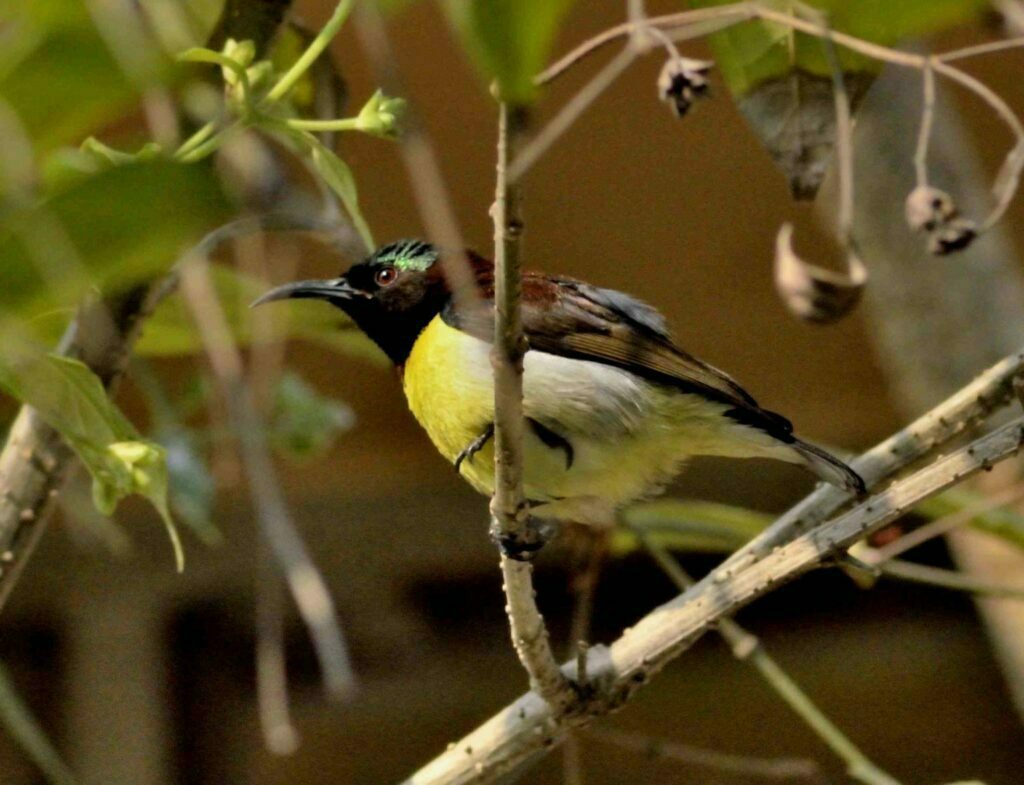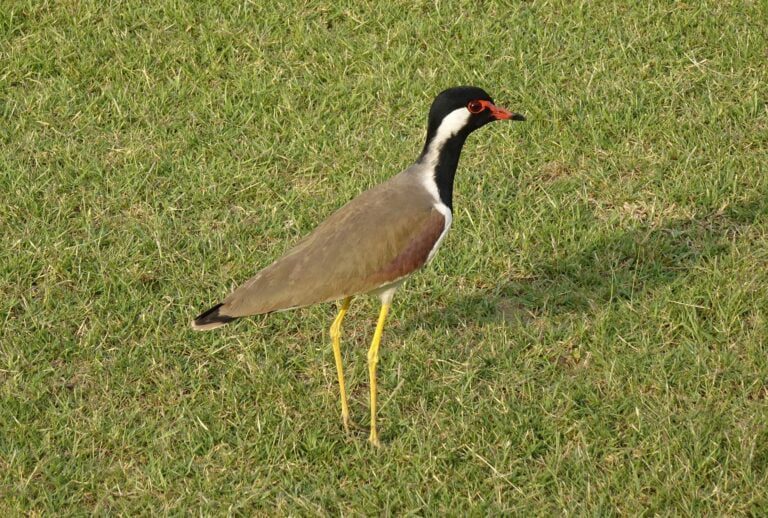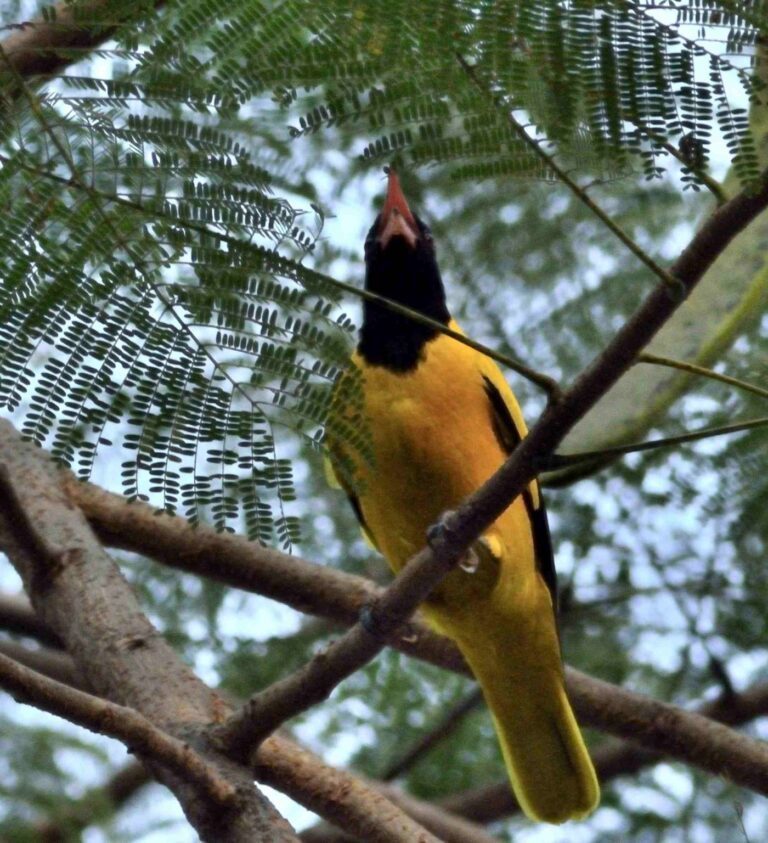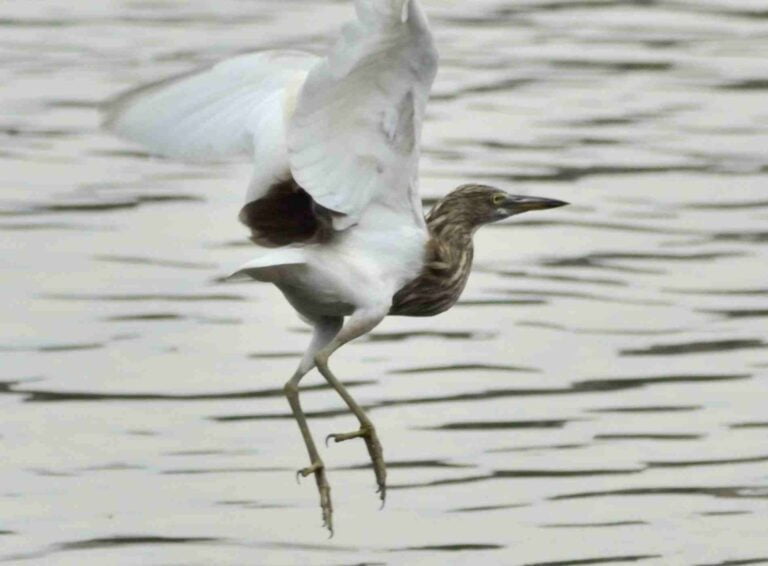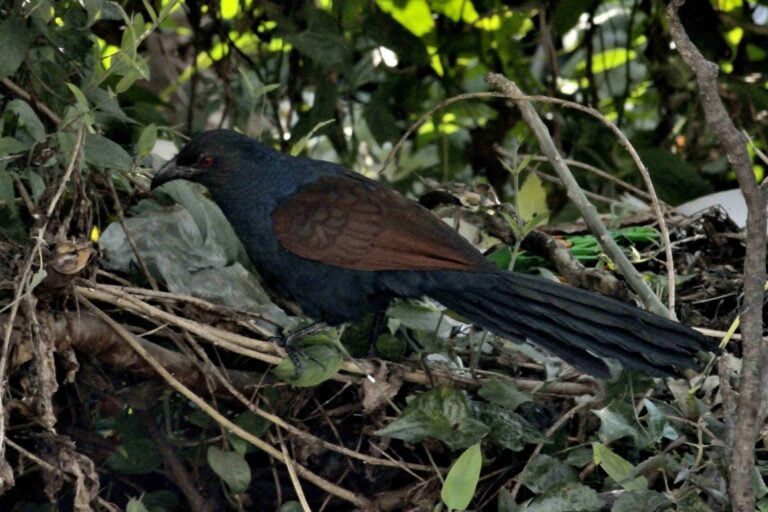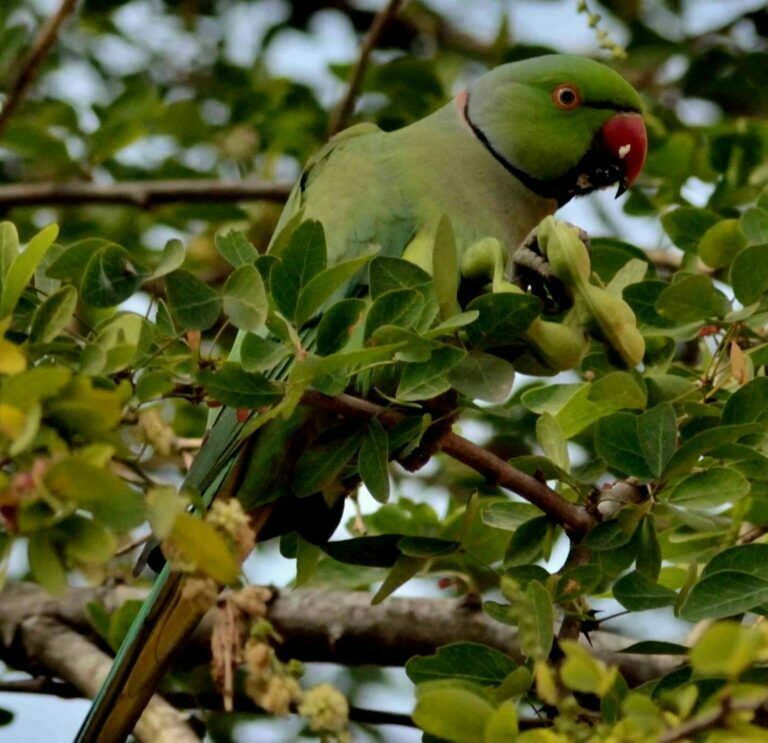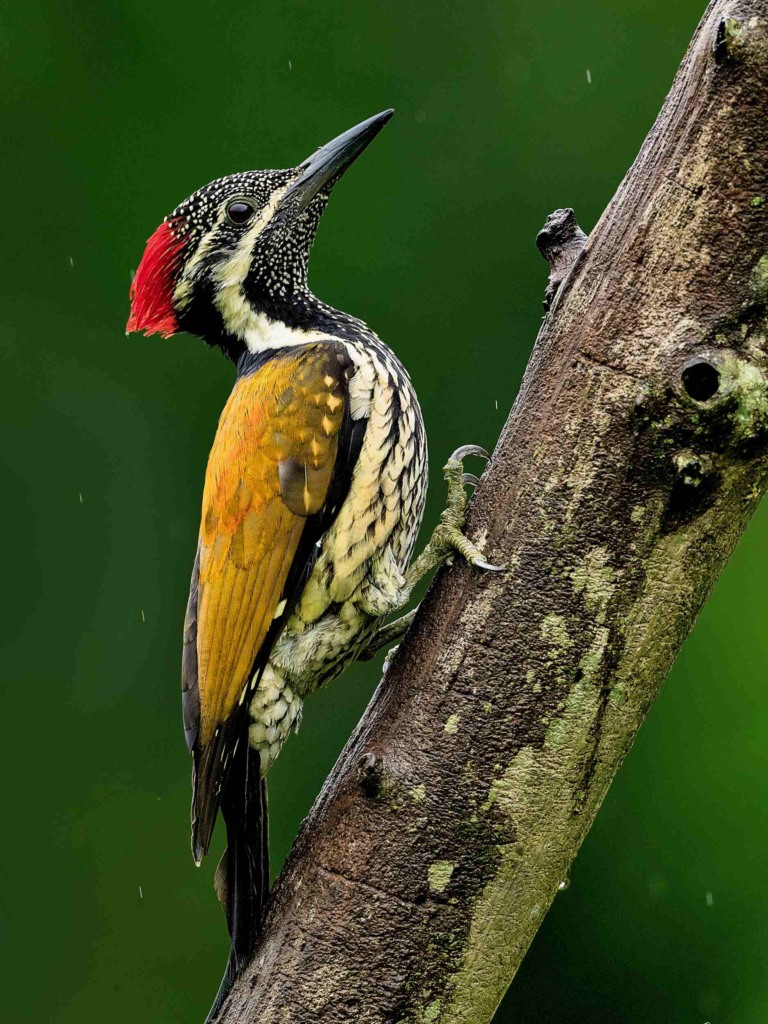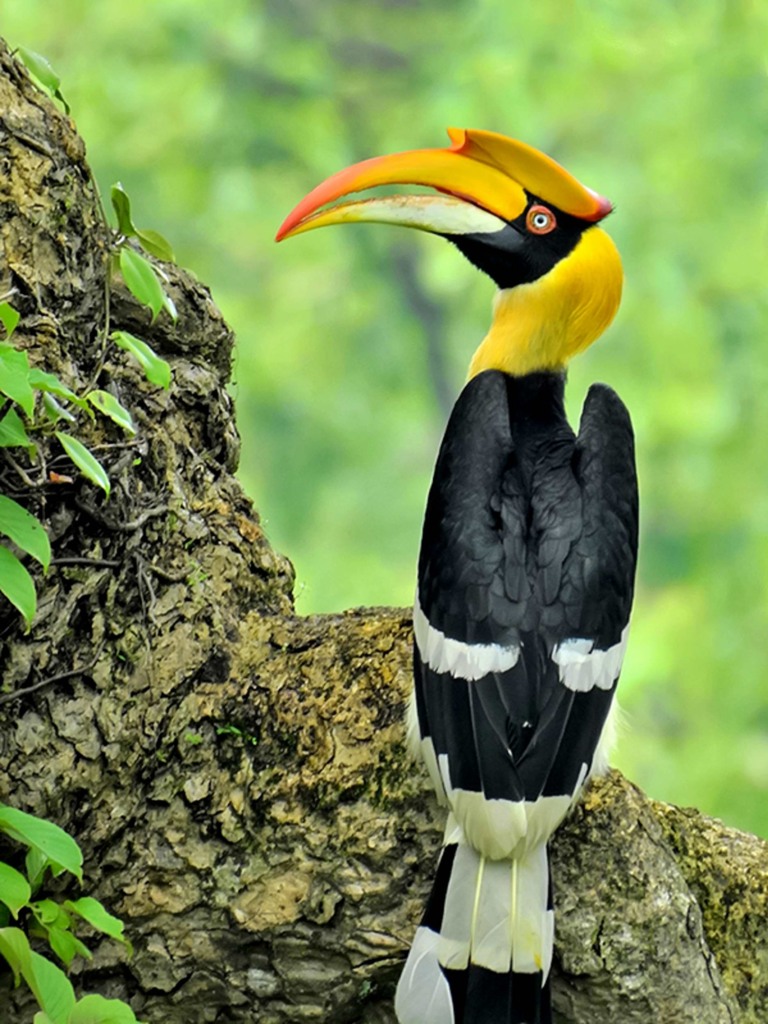The purple rumped sunbird, or Leptocoma zeylonica, or Moutusi Bird in Bengali, is a type of sunbird that is only found in the Indian Subcontinent. Like other sunbirds, they are small and mostly eat nectar, but they do sometimes eat insects, especially when they are feeding their young. These Indian birds can fly for short periods, but most of the time they sit on something to sip nectar from flowers. They use spider webs, lichens, and plant parts to make a hanging bag nest.
Purple Rumped Sunbird
Males are colorful, but females are green on top and yellow to buff on the bottom. The light undersides of the purple sunbird’s males make them simple to identify, while the white necks of the females make them distinct. Purple-rumped sunbirds are very small, with a length of less than 10 cm. They have medium-length, thin, down-curved bills and tube tongues with brush-like tips, both of which help them feed on nectar.
Male and female purple-rumped sunbirds look different. The males have a dark red back with a blue-green crown that shines from some angles, a bright green shoulder patch, and a violet or purple rump patch that is usually hidden under the wings. The underside is white, with a dark throat, a red breast band, and a purple or violet patch that can be seen from some angles in the throat.
Sunbirds in India
What a purple-rumped sunbird looks like? Most of the time, the eye is red. In some places of the Western Ghats, it can be confused with the crimson-backed sunbird, but the male of that species has redder upper parts, a wider band on its breast, and darker eyes in general. The female used to have a white throat, but now her breasts are yellow.
The top is green or brownish in color. The upper coverts of the tail are black, and a small supercilium may be able to be seen. The neck of the Sri Lankan form is more blue-violet than that of the Indian form. Flaviventris, which includes the Whistler population from Maddur, Karnataka, and the Sola population from Pondicherry, has a more red hue.
Moutusi Bird
Where the Purple-rumped Sunbird lives? The purple-rumped sunbird lives in the southern parts of India, Sri Lanka, and Bangladesh, where it also raises its young. It is found in Gujarat, which is in west India, and may have recently moved to Hailakandi, Assam, or Meghalaya, all of which are in east India. There are not any sure records from Myanmar. This species lives in a variety of places with trees, such as scrub and farms, but rarely in thick forest.
How the purple-rumped sunbird acts? They can have two broods a year, but most of their babies are born during the monsoons. The outside of the nest is covered with lichens, bark pieces, flying seeds, and other things. The inside is made of fine plant fibers and webs. Even though the male birds may fly with her, she is the only one who makes the nest. The inside of the nest is made of soft fibers, like the fuzz that covers the seeds of Calotropis.
The nest is built at the end of a branch, and the opening usually faces a bush. Sometimes, nests are made near buildings or under open porches. Before she lays her eggs, the female stays in the nest at night for a few days. There are two eggs in the nest. They are oval, pale greenish, and white, and have spots and streaks. The wide end is more thick. Eggs can also be plain gray without any spots.
When they are looking for cobwebs, they are often near the windows of homes, where they sometimes tap the glass, possibly at their own image. Most of the time, the eggs are laid in the morning. Both the male and the female are responsible for taking care of the eggs. The time it takes to hatch is between 14 and 16 days. The chicks leave the nest after about 17 days, but the male keeps feeding them for a few more days.
Indian Sunbird Nest
Sometimes, females or young birds from the last brood will help the parents feed their young. Sometimes old nests are used again. The gray-bellied cuckoo has been known to take over other birds’ nests. In one case, an adult sunbird and an adult common tailorbird both fed the cuckoo. They spread pollen to the flowers of Bruguiera, Woodfordia, Hamelia, and Sterculia plants, among others.
When they look for nectar, they do not hover as much as the similar Loten’s sunbird. They prefer to sit on a tree while they look instead. People have noticed that they have special places to scratch where they can get the pollen and honey off their heads. When the flowers are too deep to reach, they sometimes pierce the bottom of the flower and steal the nectar. This is called “nectar theft” because the flower is no longer able to do its main job, which is to attract insects.
They sometimes go to open fields of crops and eat the honeydew that leafhoppers leave behind. A sunbird can “dew-bathe,” or take a bath, by sliding over raindrops that have gathered on big leaves. Like most birds, their blood contains certain protozoan species. A specimen from Goa has been used to identify a species of Haemoproteus raymundi, but the identification and taxonomic placement of this protozoan that looks like malaria are still up for debate.
